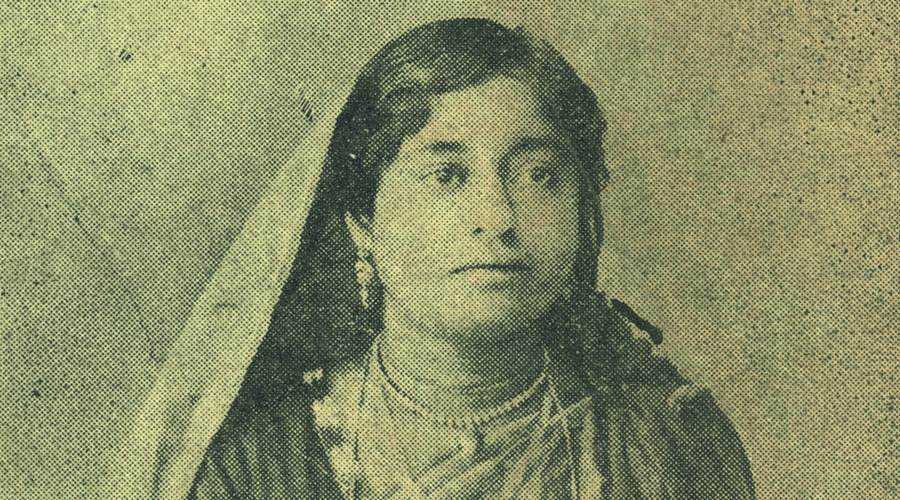Nautch on record
Did you know that the first ever voices to be recorded for the gramophone in British India were of two nautch girls in Calcutta?

Writer: Nihira
Pictured: shimukhi
On November 8, 1902, Miss Soshimukhi (right) and Miss Phanibala were teenagers when they became the first voices recorded for the ‘talking machine’ in British India.
Frederick William Gaisberg, a musician, recording engineer, and representative of the Gramophone and Typewriter Ltd, produced India’s first commercial recordings starring the young girls. Unimpressed, Gaisberg noted in his diary that the “two little nautch girls aged 14 and 16 had miserable voices”.
How did he find the young performers?
Gaisberg depended on local ‘fixers’ in India for finding artists willing to be recorded by the ‘talking machine’. For Calcutta, his fixers were eminent theatre and film personalities, Amarendra Nath Dutt and Jamshed Framji Madan. Dutt, a prolific playwright, opened Classic Theatre in 1897 with local Bengali performers. Madan, on the other hand, established the iconic Elphinstone Picture Palace (now known as Chaplin Cinema) after moving his Hindi-Urdu and Gujarati speaking performers from Bombay to Calcutta’s Corinthian Theatre which consequently became known for its Parsi plays.
Why Soshimukhi and Phanibala?
Soshi and Phani were employed as performers by Dutt’s Classic Theatre. Gaisberg recorded several artists working under Dutt. The two girls lived in Chitpur. One of the oldest corners of North Calcutta, Chitpur has been home to countless intellectuals and artists like Rabindranath Tagore, Sukumar Ray (Satyajit Ray’s father), and Gauhar Jaan. With its lively jatra performances and a thriving culture of theatre and nautch, Chitpur was an obvious choice for the Company’s recording tour.
Gaisberg wrote in his diary that Soshimukhi and Phanibala were from the caste of ‘public women’. His comment could be referring to Chitpur’s popularity as a site of sex work in Calcutta. One can also presume that this was his limited understanding of how those historically dependent on public performance for sustenance were positioned lower in the caste regime.
But Chitpur was home to many such women.
Stage actresses such as Binodini Dasi, Tara Sundari, or popular courtesans like Ganga Bai (who trained Binodini) all resided and resisted in the area. Even Devdas’s Chandramukhi was written to be one of the foremost courtesans and sex workers based in the bustling locale. Women from oppressed castes navigated a complex web of violence. And yet without these ‘public women’, South Asian recording history may have been far less remarkable.
What happened to Soshimukhi and Phanibala?
Despite Gaisberg’s racist denouncement of their ‘miserable voices’, they made a name for themselves in Calcutta’s cultural circuit. Soshimukhi emerged as a popular stage actress, patronised by figures like the Father of Bengali Theatre, Girish Ghosh. Information on Phanibala is scarce but she appears in record catalogues of labels like Germany’s Beka Records.
Today, the legacy of nautch girls who changed the course of music in South Asia has faded. Is it possible to recover it?